
10 minute read
INTRODUCTION
INTRODUCTION
1.1 | Motivation 1.2 | Context 1.3 | Problem statement 1.4 | Working hypothesis 1.5 | ‘Como - Chiasso’, ‘Ponte-Chiasso’ or ‘Chiasso - Ponte-Chiasso’ ?
Advertisement
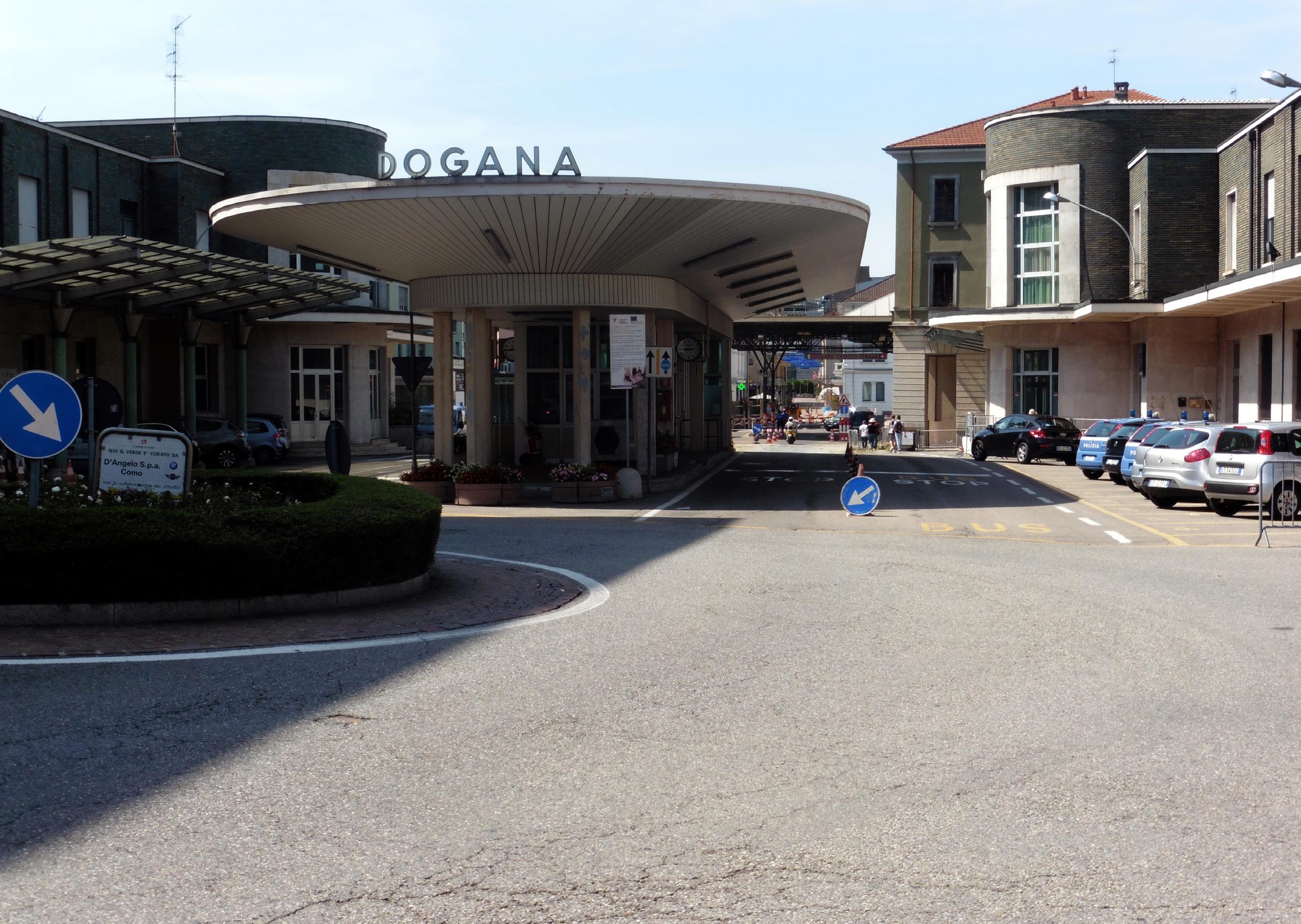
Europe is in crisis. Or, at least, so state politicians and the media, referring to the influx of refugees that have entered Europe allegedly to endanger European values and agreements. In 2015, the amount of refugees - primarily Syrians, Afghans and Iraqis - who crossed the Mediterranean sea in the hope to find refuge in Europe tripled compared to the previous year, to more than a million registered arrivals1. The large increase lead media to speak of a real, European ‘refugee crisis’.
So as the actual crises worldwide pushed people towards Europe, Europe pushed back. In order to protect our nations, proposals of walls, fences and other means to keep strangers out became the hobbyhorse of national leaders in their battle to make us (feel) safe again. The continuation of a European Union was questioned in favour of nationalist ideals. If Europe could not protect us, surely the nation could. On that account, the past decade has witnessed the rapid rise of nationalist movements that advocate closed-border policies - equating closing borders to securing identity2 .
A closed border, in these cases, does not mean really closed. Rather, ‘closed border’ means closing the border to those who are not and cannot be part of the national ‘us’ romanticised by nationalist leaders. For all of those who are expected to contribute to the economic growth of the nation, however, borders are wide-open and migration or ‘being mobile’ is stimulated. It can therefore be argued that migration in the Western society has two strongly distinguished faces. On the one hand, migrants who are expected to contribute to the growth of the national economy – such as expats and international students – are welcomed and even fought for as European
1 UNHCR, ‘The Mediterranean Situation’ <https://data2.unhcr.org/en/ situations/mediterranean> [accessed 9 April 2020].
2 Michel Agier, Borderlands: Towards an Anthropology of the Cosmopolitan Condition (Cambridge: Polity Press, 2016).
Figure 1 Left Two refugees just expelled from Switzerland (August 2016). By Mattia Vaca.
Figure 2 Above Border crossing Chiasso - Ponte-Chiasso (August 2017). By Harm Luiting. Retrieved from Flickr.
Como - Chiasso
Como - Chiasso







capitals compete for the optimal ‘business climate’. Migrants who do not meet the demands of neoliberal growth, instead, are excluded. The political climate in Western societies is increasingly leaning towards excluding those who appeal to the safety and prosperity of the West, but who are not expected to contribute to it. It is this prejudiced, two-fold treatment of mobility, in which some migrants are desired and invited and others are undesired and excluded, that this thesis confronts.
The ever so human wish to move to where possibilities are grander or risks fewer will continue to push and pull people from and to different places across the globe. It is this fluctuating demand that our urban environment needs to adapt to.
The interdependency of people across the globe and the increasing amount of people who identify with more than one nationality ask us to rethink what it still means to be protected by a nation-state border, how these borders influence our daily lives and the lives of others, and how and why - in a world in which we increasingly depend on people and functions across borders - borders still separate, rather than integrate differences. The aim of this thesis is to shed light on ways to adapt planning and design to an increasingly mobile world, taking border space as the lens through which to explore large phenomena such as (the spatial accommodation of) migration.
1.2 | Context
The project location that this thesis concerns is the border area of Como (Italy “IT”) and Chiasso (Switzerland “CH”). The area, graced by beautiful lakes and mountainous landscapes, is famous for its tourism. Yearly, more than three million visitor nights are spent in the luxurious lake town of Como3. Tourism has also defined Como’s history. Already around 1700, European intellectuals and nobles visited the villas on the lake as part of their Grand Tour. The city has thrived on temporary inhabitants ever since. But, when the year of 2015 saw a new group of strangers arrive to the city, these people were somehow received less hospitability.
Many refugees who cross the Mediterranean sea first set foot in Europe on Italian territory. This makes Italy one of Europe’s arrival countries. In 2015, Italy functioned as a gateway for 153.842 registered refugees4 – many of whom were on their way to Northern Europe. Countries bordering with Italy observed the soaring numbers and decided to take action to protect their nations. After both France and Austria ‘temporarily’ reintroduced border control to manage the ‘unforeseen’ arrival of refugees5, the Como (IT) – Chiasso (CH) border crossing became the last channel towards a better future up North for refugees who had arrived to Italy.
When migrants massively changed routes to move towards Northern Europe through Switzerland, Switzerland also increased security along its border with Italy. The nonEU country increased control at border checkpoints, performed consistent train checks and sent out helicopters and drones with heat sensors to limit the amount of illegal refugees entering the country6. According to data from the Federal Customs Administration, in 2016 there were 34.000 attempts to enter the Swiss-Italian canton Ticino illegally, mostly at the border with Chiasso7. On the other side of the border, in the Italian city of Como, refugees who had not succeeded to cross started to accumulate in the park in front of the Como S. Giovanni station, in the station building and on the platforms. Over a hundred people were sleeping on the streets.
3 Compared to, for example, sixteen million nights in Amsterdam. Both numbers concern 2017. Retrieved from: http://dati.istat.it/ and https:// data.amsterdam.nl/ [accessed 9 April 2020].
4 UNHCR, ‘Sea Arrivals to Italy’, 2016 <https://data2. unhcr.org/> [accessed 9 April 2020].
5 European Commission, ‘Temporary Reintroduction of Border Control’ <https:// ec.europa.eu/home-affairs/ what-we-do/policies/ borders-and-visas/schengen/ reintroduction-bordercontrol_en> [accessed 9 April 2020].
6 USA Today, ‘Switzerland Blocks Migrants Wanting to Pass-through from Italian Border’, 2016 <https:// eu.usatoday.com/story/ news/world/2016/09/16/ switzerland-blocks-migrantsitalian-border/89955758/ > [accessed 9 April 2020].
7 OpenMigration, ‘Como, an Endless Game of the Goose at the Expense of Migrants’, 2017 <https://openmigration. org/en/analyses/como-anendless-game-of-the-gooseat-the-expense-of-migrants/> [accessed 9 April 2020].
Above ‘Temporarily’ reintroduced border control in 2015. Map by author. EU Schengen state Non-Schengen EU state Non-EU Schengen state Schengen external border Schengen reintroduced internal border control
Figure 3 Below Main refugee routes towards Northern Europe. Map by author.
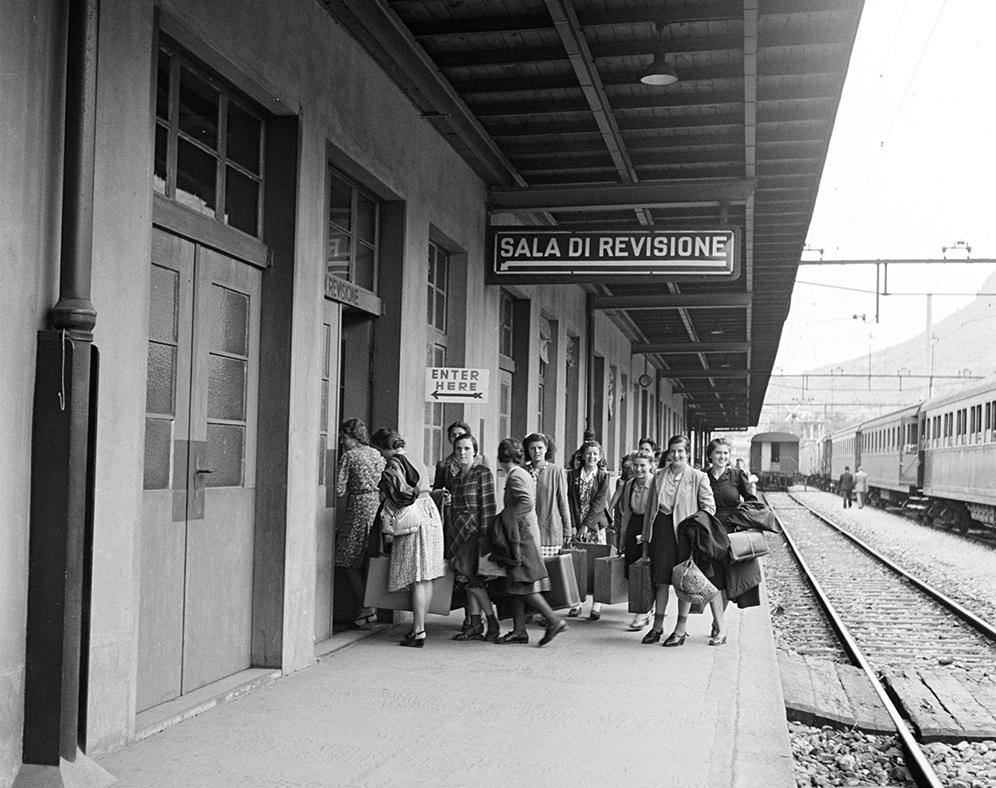
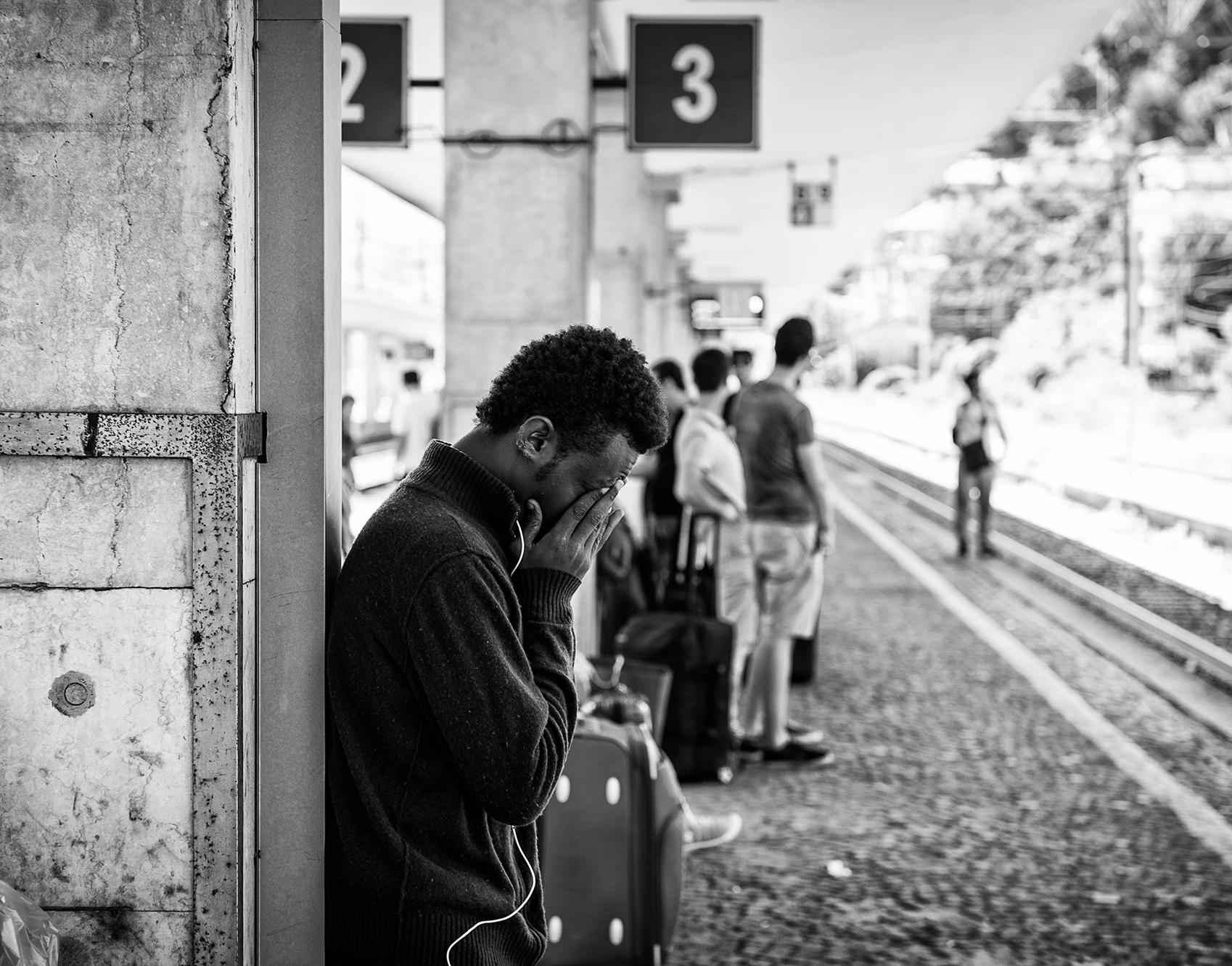
Whether to offer shelter to people in need, or to relieve the unappealing pressure on public spaces, a refugee camp accommodating 300 people was opened in Como in 2016, tucked away between an old factory, a cemetery and the railway none of them was allowed to make use of. Then, in October 2018, the camp disappeared again - its inhabitants mysteriously redistributed to other centres8 .
At the same time, while a small, prejudiced part of society was stuck in the border of Como – Chiasso, thousands of people crossed this same border daily to get to work or to run errands. Each day, seventy-thousand Italians cross the border to go to work in Switzerland9. The large majority of them work in the city of Lugano, near Chiasso. The border of Como – Chiasso is defined by heavy infrastructures that allow thousands of people to move between Switzerland and Italy daily. For them, the border offers opportunities. More than just a line on the map, the border is a marker of changing conditions. Different taxation systems, laws and possibilities invite people to cross borders.
All in all, the border area between Como and Chiasso is home to various groups of people who are living in mobility: tourists, refugees and commuters, but also transport drivers for whom the Como – Chiasso crossing is the main border crossing between Italy and Switzerland. Each of these groups has their own network of places and spaces that they use - but the hypothesis of this thesis is that these networks hardly cross. Opportunities for different groups to meet in border space and to
benefit from each other’s presence are minimal, because of the general focus on
crossing, rather than staying.
All of this makes the border between Como and Chiasso an exclusionary border: while some people are stimulated to cross, others stay stuck in formal or informal encampments in border space. The lives of different groups in border space are separate and chances for interaction and synergy are restrained. By investigating
the Como – Chiasso border area, knowledge will be developed on how to spatially organise border space that enables interaction an accommodates inclusive
mobility.
8 QuiComo, ‘Chiusura Del Campo Profughi Di Como, Migranti Trasferiti: Centro Sgomberato’, 2018 <http:// www.quicomo.it/politica/ chiusura-campo-profughicomo-sgomberato.html> [accessed 9 April 2020].
9 G.P. Torricelli and S. Garlandini, ‘La Frontiera e Le Mappe: Evidenze Demografiche e Socioeconomiche Tra Svizzera e Italia, 2010-14’. Quaderno I (Mendrisio: Dipartimento del territorio, Bellinzona, 2017).
Figure 4 Above Young Italian women arriving at the railway station in Chiasso (1950). By SBB Historic. Retrieved from: < https://blog.nationalmuseum. ch/en/2019/07/the-italiangirls-of-migros/>
Figure 5 Below Refugee waiting for train from Como S. Giovanni station to Chiasso (August 2016). By Mattia Vaca. Retrieved from: http://reportage.corriere.it/ cronache/2016/italia-svizzeracon-i-migranti-lungo-i-sentieridei-contrabbandieri/>
1.3 | Problem statement
Border space is a space with unique conditions. The different conditions on both sides of the border allow people who are able to cross this border to profit from opportunities on both sides. Their access to cross-border mobility allows them to develop socially and economically. Unfortunately, developments along borders rarely take into account the quality of the living environment. Instead, the developments are focused above all on improving efficiency of crossing, hereby economising time. But not everyone is able to cross borders. Refugees who are stuck in the margins of border space are often isolated from economic and social activity, making their waiting time a waste. People who can cross the border, instead, have no reason to halt in border space. The lives of different people in border space are entirely separate and chances for interaction and synergy are restrained.

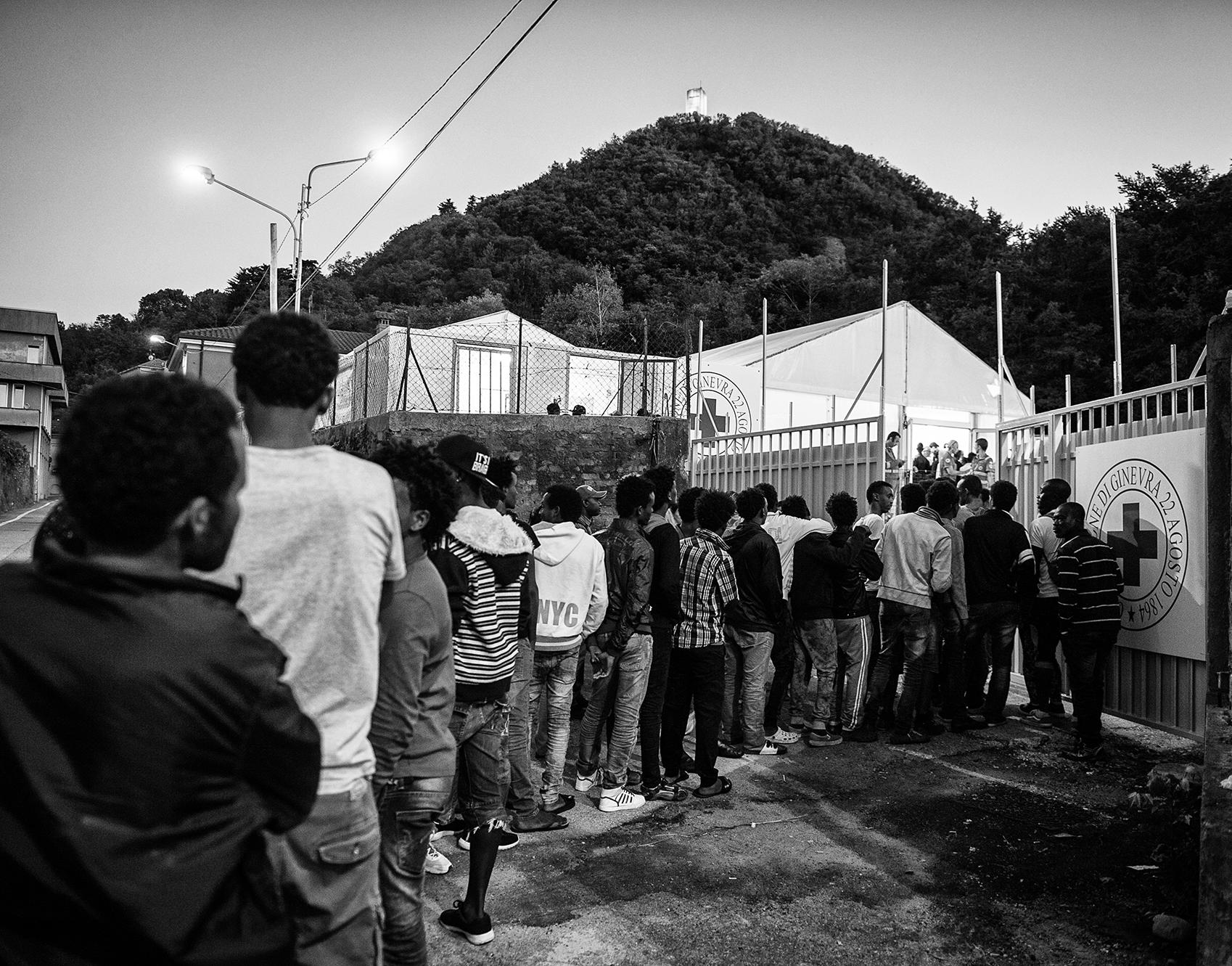
1.4 | Working hypothesis
Fostering the integration of social groups in border space through mobility - by making paths cross - can produce social and economic opportunities that are greater than the sum of opportunities achieved within groups individually. Enhancing the interaction between refugees who are stuck in border space and those who can cross and are mobile, can help refugees to be involved in economic and social activities, making their waiting time in border space worthy. For border crossers and border inhabitants, redesigned border space offers unique facilities and stimulates slowing down, improving the experience and living quality of border space and allowing for interaction between and awareness of diverse identities. Borders as markers of different identities and cultures can then be a place where differences meet.
Throughout this thesis, several terms are used to describe the research location. The term ‘Como - Chiasso’ refers to the larger border region that consists of the two municipalities Como (IT) and Chiasso (CH) (marked with a black outline). ‘PonteChiasso’ is a comune (‘frazione’) within the municipality of Como that is attached to the Swiss-Italian border (marked in light grey). The term ‘Chiasso - Ponte-Chiasso’ refers to the area along the Swiss-Italian border in Chiasso and Ponte-Chiasso (marked with a dashed circle). These terms will be used throughout the booklet and strategies and designs will address these different scales.
CHIASSO Chiasso - Ponte-Chiasso
Ponte- Chiasso
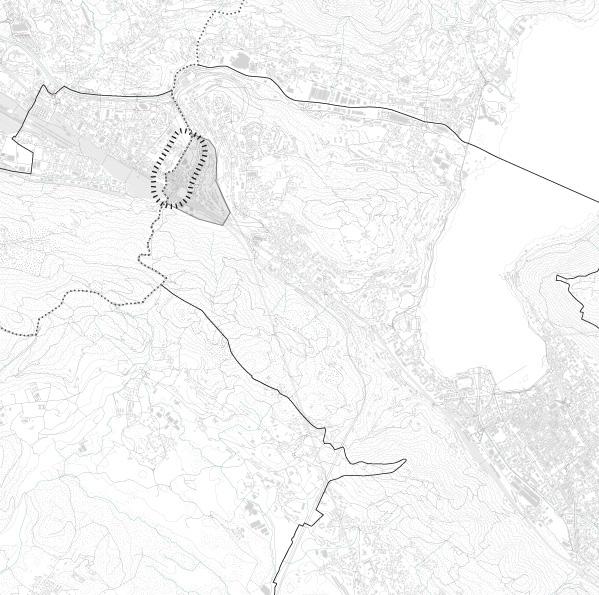
LAGO DI COMO
COMO
1 km
2 km
3 km
4 km
5 km Figure 6 Left Above Early twentieth century Italian migrants on their way to France (6.400 people), Germany (13.500), Luxembourgh (6.570) and Switzerland (15.400). Retrieved from: < http://www. settimanalediocesidi como.it/2019/02/12/ quando-gli-emigrantipartivano-per-lestero-dallanostra-diocesi-alla-ricerca-diun-futuro-migliore/
Figure 7 Left Below Refugees waiting to be let into the camp in Como (August 2016). By Mattia Vaca. Retrieved from: < http://reportage.corriere.it/ cronache/2016/italia-svizzeracon-i-migranti-lungo-i-sentieridei-contrabbandieri/ >
Figure 8 Right Below Definition of different design scales. Map by author.








